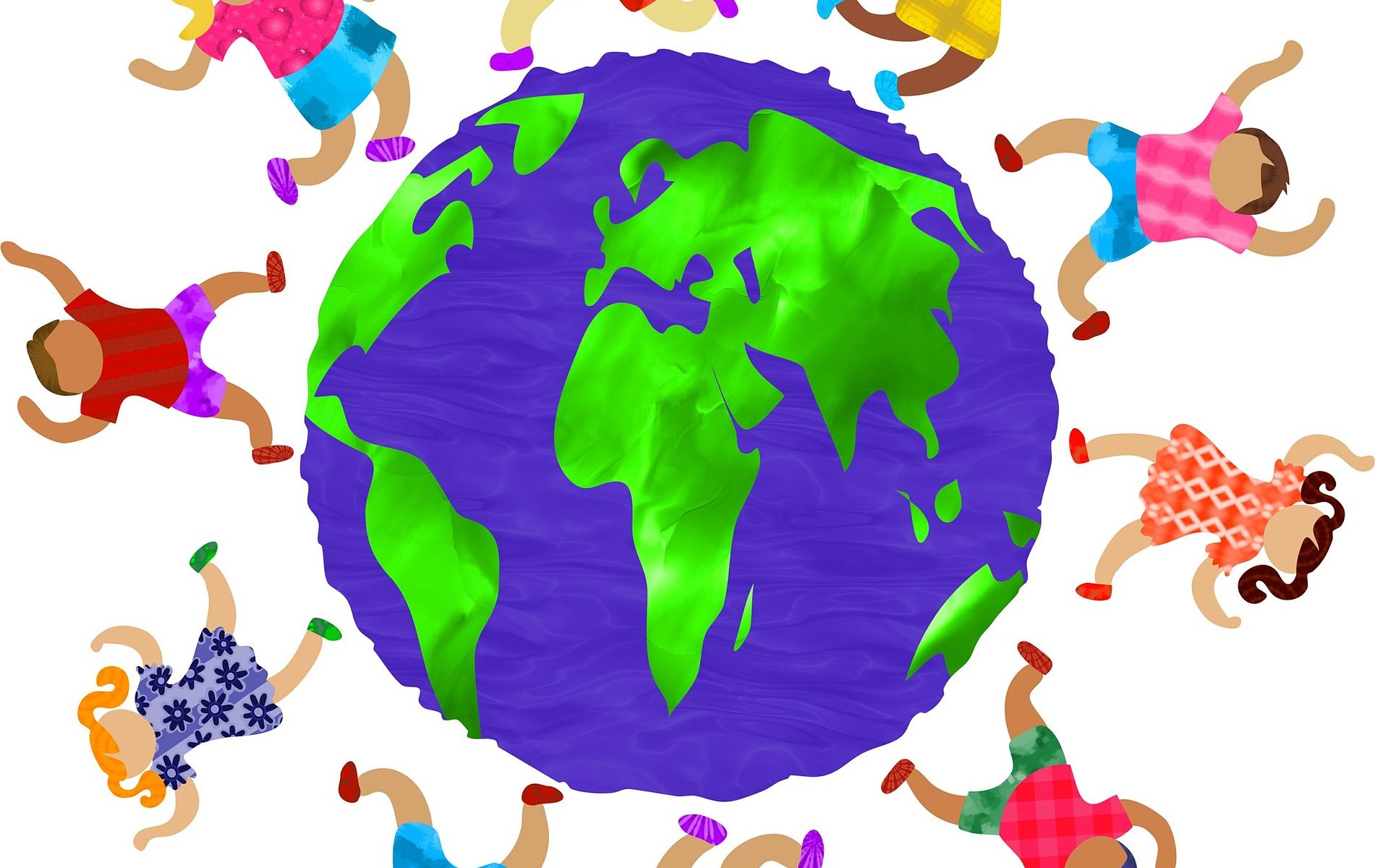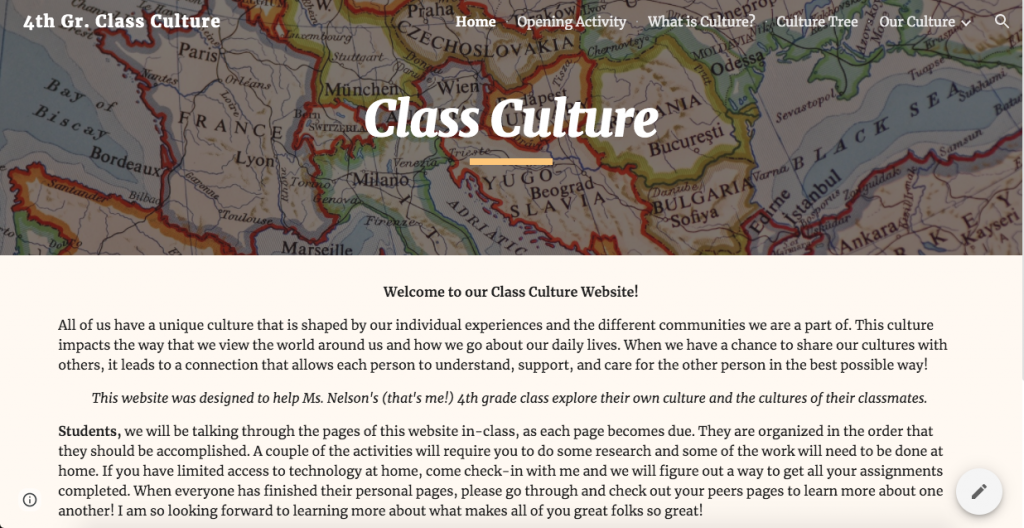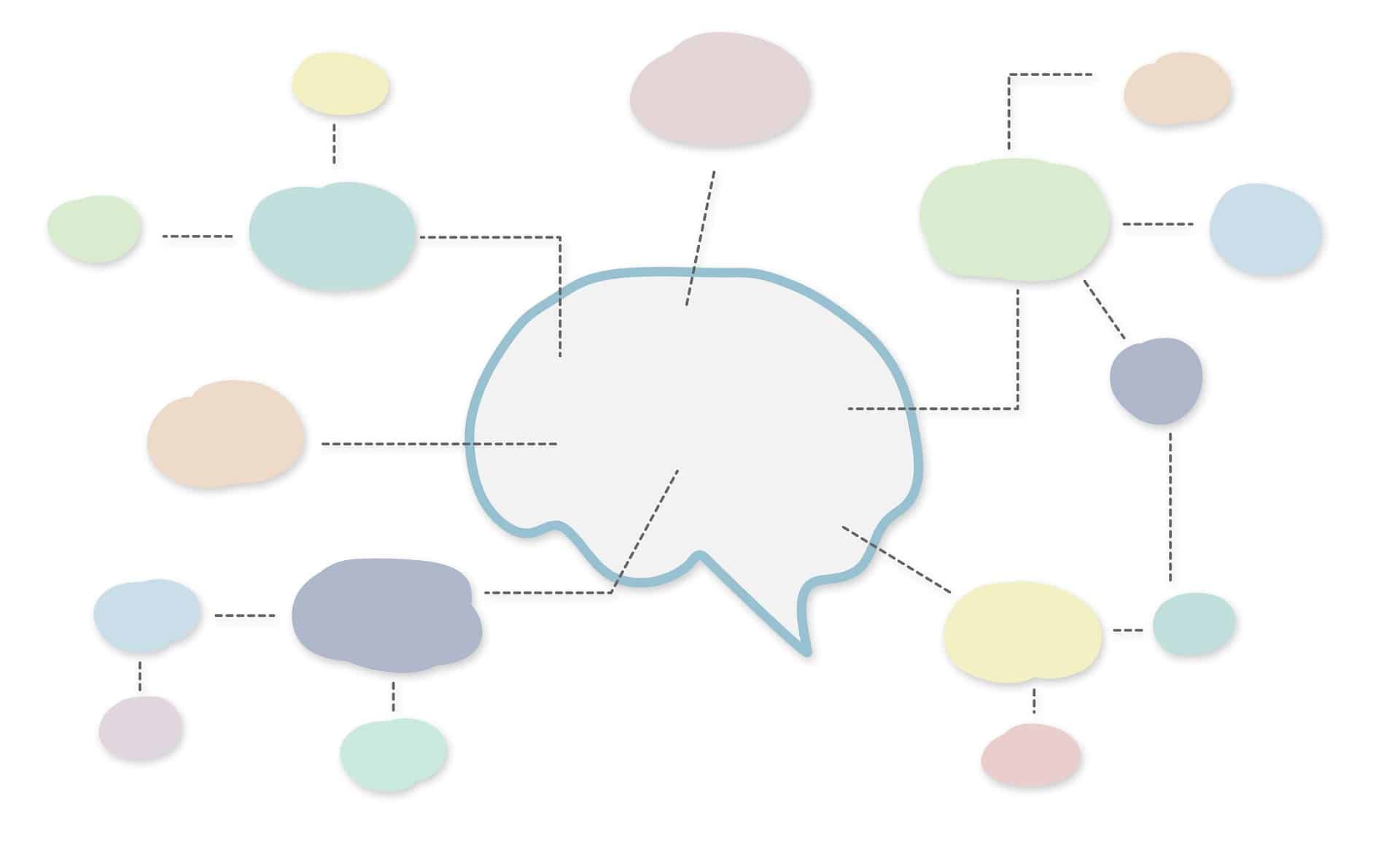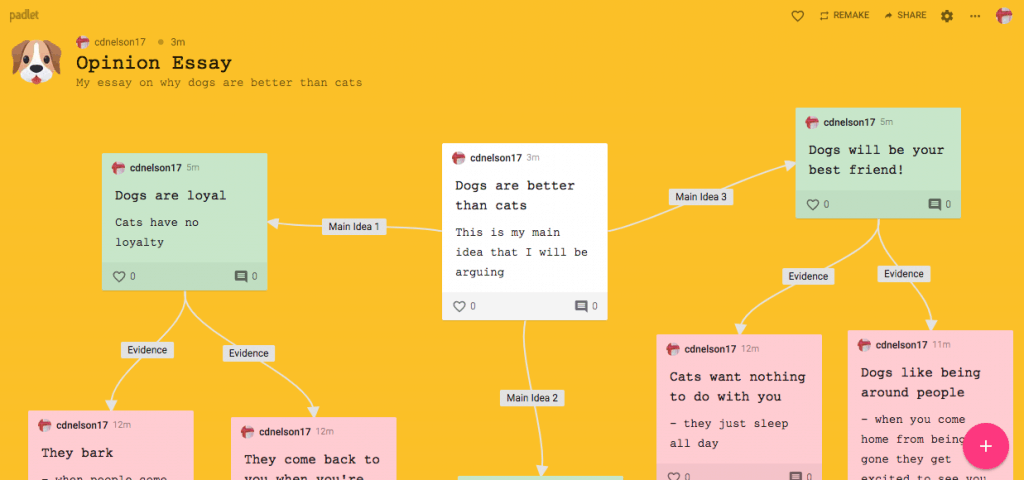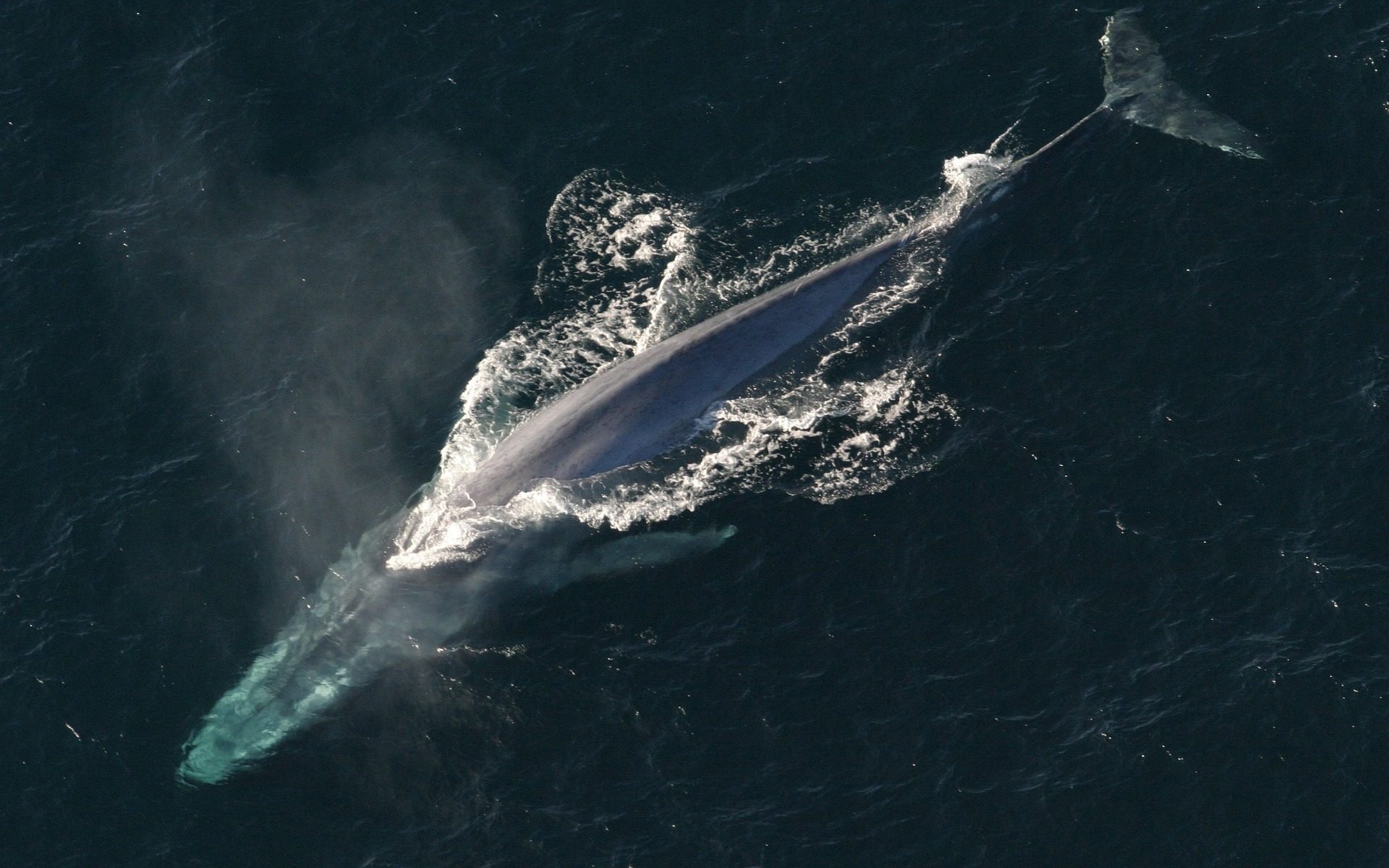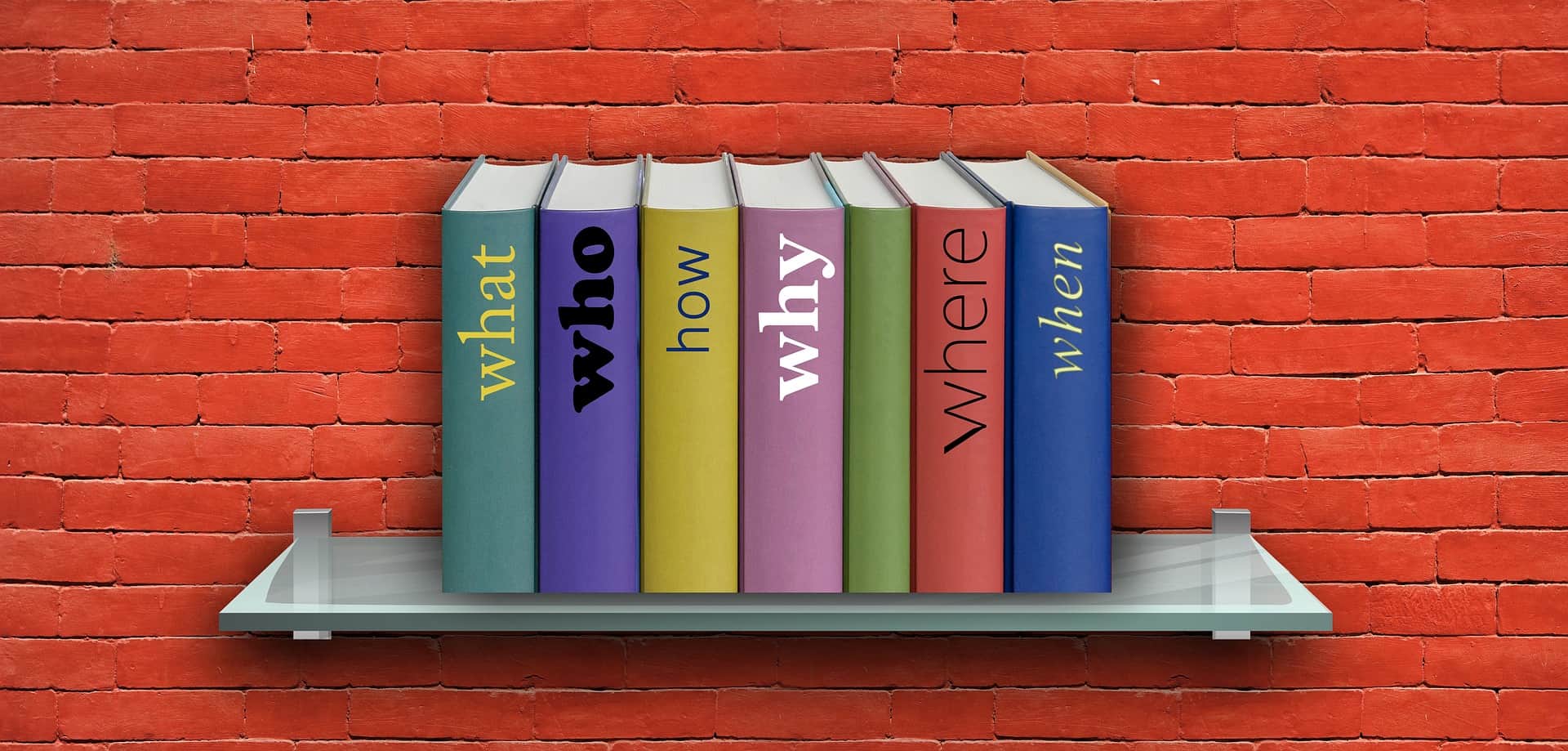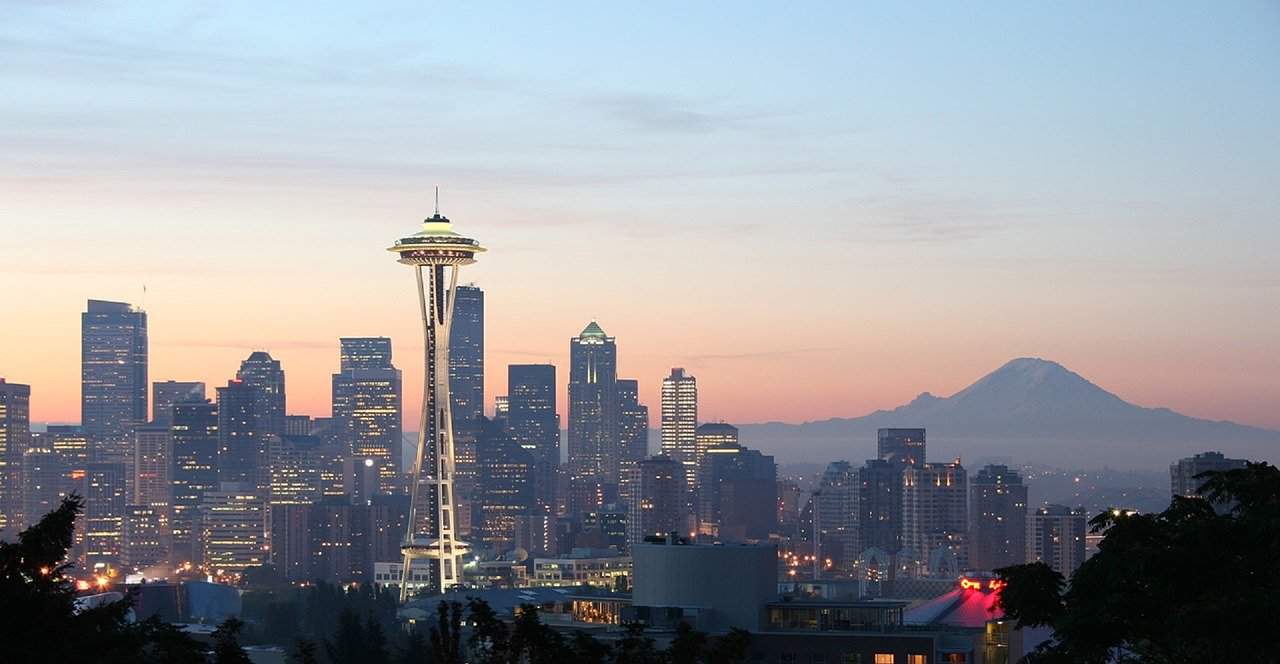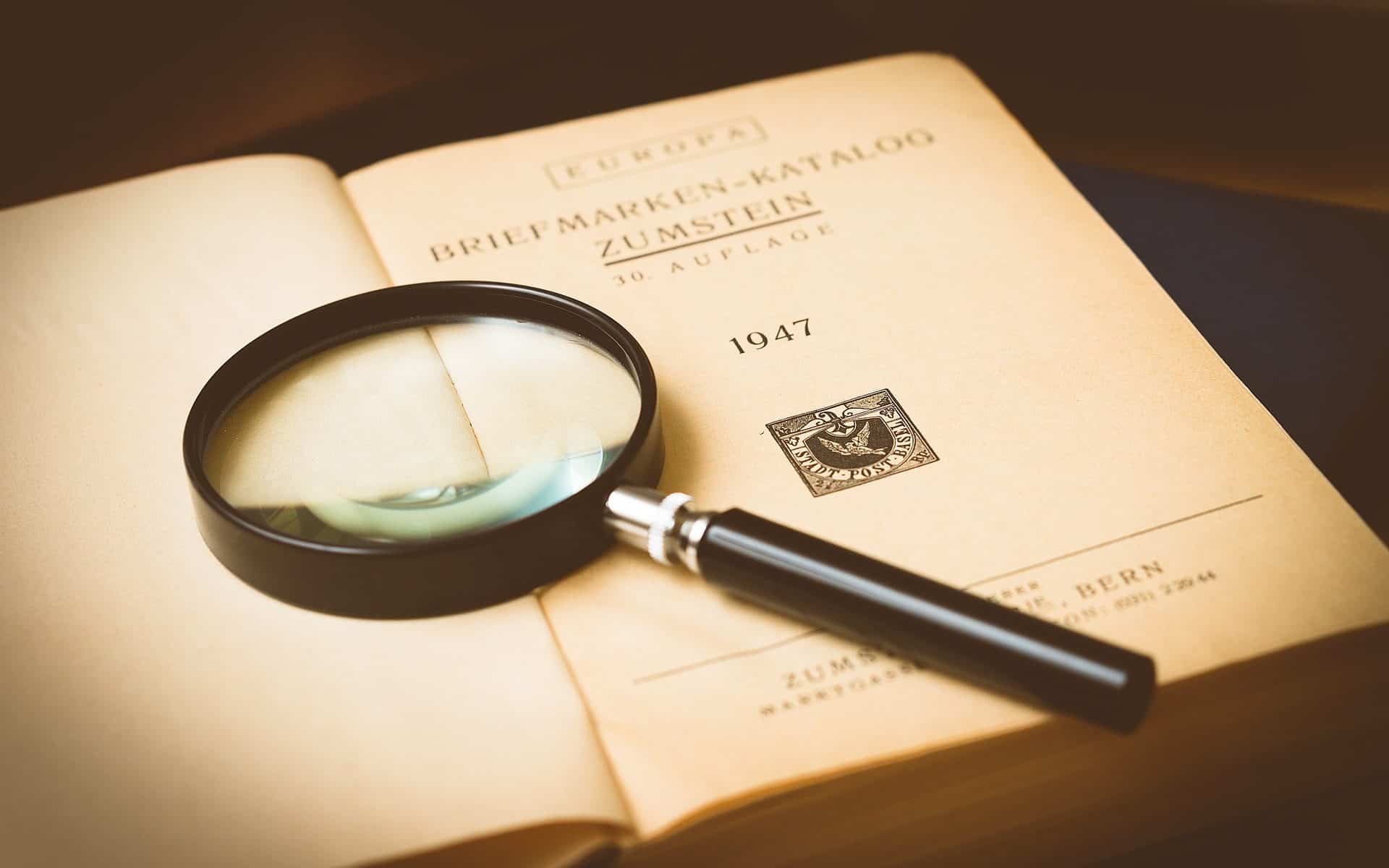It is the responsibility of any teacher to do all that they can to effectively convey and communicate content, to encourage students to engage with the material and reach their fullest potential, and to help students grow not only academically but socially and emotionally. In order to do this, I believe that teachers should work to integrate technology and all of the resources that it provides into their classrooms. I had a professor who told me that technology is something that students are already engaging with, so for school’s to resist the advances of this rapidly growing field would be limiting their methods of communicating with students (or something along those lines). While I agree with this statement, I believe that technology has the ability to not only provide an access point, but to enhance the classroom community in diverse and important ways. I have embedded some highlights from my portfolio that I feel illustrate 3 key ways that technology can help to create a classroom that is culturally responsive, encourages collaboration and connection, and allows students opportunities for experiential learning without even leaving the classroom.
Using Google Sites, I created a “Classroom Culture” Project where students have the opportunity to not only dive deeper into their own culture and what makes them unique, but learn more about their classmates’ cultures as well. In this case, technology allowed me to create a resource that makes my classroom and my teaching more culturally responsive, and will help my students to feel known and valued for who they are. To read more about this project, click below:
One of the things that this course allowed me to experience first hand was the collaboration and connection that can come from using technology. Using Google Slides, my colleague Anna Wanner and I were able to make an activity on making inferences using clues from the text. Creating technological masterpieces, as well as using technology (i.e. the finished google sites project above) can be a collaborative experience for both teachers and students. Sharing documents and work, as well as their stories and their personal experiences on a digital platform can allow students to connect with one another from physically different locations. To read more about the inference project, click below:
Using Google Tour Creator, I was able to create a science lesson all about investigating the ways in which specific environments have been impacted by environmental change and human actions. Technology like this resource from Google, and virtual reality (if you can access it) have the ability to transport students to new places. Not only does this make them global thinkers, but it gives them the chance to explore and experience a location that they may not have the chance to physically visit on their own. To read more about this project, click below:
I am looking forward to finding more technology resources and continuing to expand my knowledge on the tools that are out there to make my classroom the best it can be! Enjoy my portfolio!
Featured Image by Mudassar Iqbal from Pixabay


